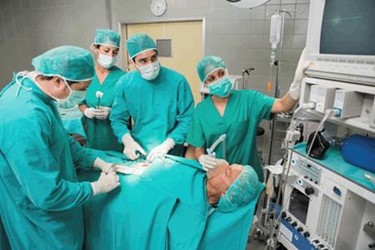Want Better Devices? Send Your Engineers Into The OR

By Bob Marshall, Chief Editor, Med Device Online

Before he was an “Outdoor Man” marketing sporting goods in the Rocky Mountains as the Last Man Standing, Tim (“The Tool Man”) Taylor did most of his work indoors — on a little show called Home Improvement. Fortunately for the often accident-prone know-it-all, he had a competent sidekick in the mild-mannered Al Borland, who often knew a better way to get things done properly.
As Chad Seaver, CEO of Arkis BioSciences, explained to me the company’s Tunneling Guidewire line of instrumentation and its proprietary single pass work flow, I began to understand (in my own way) how this medical technology could provide better utility for neurosurgeons and better outcomes for patients.
I flashed back to a tricky home improvement project I have dealt with on several occasions: If you want to add a ceiling fan, move a wall switch location, or add a new power outlet, you have to navigate the new wiring through the walls to the desired location(s). The challenge is having to “fish” the wiring behind the existing drywall — and often around corners — to thread it from point A to point B. The low-tech solution to this challenge is to cut small holes in the drywall at points along the wire’s path to complete the run. This gets the job done, but also leaves multiple messes to clean up, and several holes to patch.
This is analogous to shunt systems that are placed to treat hydrocephalus. A ventriculoperitoneal shunt diverts cerebrospinal fluid from the ventricles within the brain to another body region (e.g., peritoneal cavity), where it will be absorbed to reduce fluid volume in the brain and, correspondingly, intracranial pressure. This surgery has traditionally been performed using three incisions: one on the scalp, a second incision behind the ear, and a third in the abdomen. A catheter from the scalp incision is maneuvered to the incision behind the ear, while a second catheter is maneuvered from the abdominal incision to the incision behind the ear. The two catheters then are connected to complete the drainage pathway for cerebrospinal fluid. The problem is that, unlike patching holes in drywall, each incision in the human body is a potential site for infection and is likely to result in a scar.
First, it’s great that minimally invasive surgical techniques and devices have been developed, enabling procedures like this to be accomplished with only three small incisions in the body. But what is even greater for patients is that technology development continues to move forward. Could this procedure be accomplished with less trauma and infection risk to the patient? What if the incision behind the ear could be eliminated? How could that be accomplished?
These were the questions Seaver and Arkis BioSciences sought to answer with the development of their Single Pass Tunneling Guidewire. This system routes a shunt catheter from the frontal scalp incision to the abdomen using a tunneling instrument with a steerable guidewire. Using this technology for a shunt procedure typically eliminates the third surgical site.
I asked Seaver how Arkis was able to identify and solve this unmet clinical need. He replied, “The difference, or the advantage, is that we truly get our engineers into the operating room and explore opportunities to improve things. We’re going into the operation room and looking for those clinical needs, while other companies only have the clinical specialists attending surgical cases, and their engineers are far removed from the operating room.”
Seaver’s comments and the overall approach at Arkis are a natural extension of enhanced focus on human factors in the development of medical devices over the past decade. All too often, engineers are given incomplete specifications and little information about how exactly a device will be used, and then are asked to develop it in a virtual vacuum. A good approach is to provide a full set of specifications to the engineers and designers, but an even better way to solve an unmet clinical need is to fully engage the environment of use. Connect the patient to your device development process.
Arkis also gained 510(k) clearance for its CerebroFlo external ventricular drainage catheter late last year. Arkis BioSciences licensed Endexo technology for CerebroFlo, which may reduce fouling — a common problem during catheter use. Seaver and his team have an exclusive license for the use of Endexo in central nervous system catheters.
“Endexo modifies the surface of the catheter. It’s an additive, not a coating,” Seaver explained. “So, it’s an additive to the polymer matrix itself, and does not deplete over the course of treatment.”
Thus, don’t be surprised to find Arkis engineers hanging around an operating room near you, looking for ways to make life better for patients, doctors, and payers — and don’t be afraid to venture there yourself.
